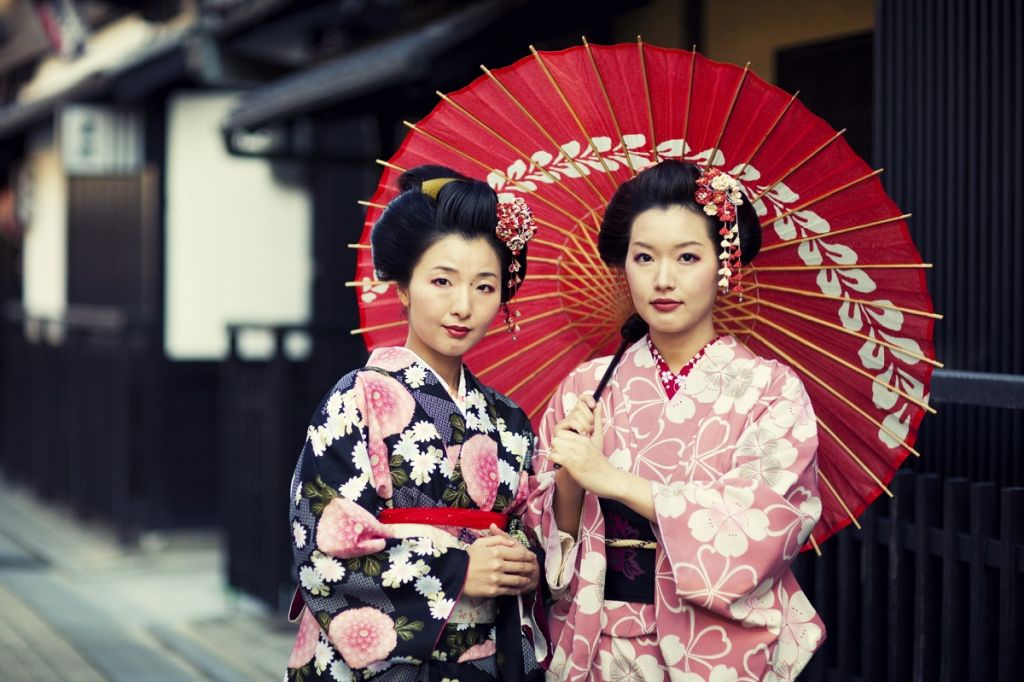Kimono – National dress of the country of cherry blossoms

Referring to Japan – the land of the rising sun, we must all immediately relate to the image of the majestic Mount Fuji, the giant citadels, or the cherry blossom forests in full bloom. April. Today, SNKR Vietnam male I would like to introduce a few brief details about a symbol that is specific to the culture of Fusang, and it also has an equally impact on the fashion trend of the world, which is the National Dress of Japan: kimono.
Thank you for reading this post, don't forget to subscribe!
In Japanese, “kimono“(き も の) only has a simple meaning of” clothes to wear “, but now, that concept has been expanded and understood in the sense of” traditional national clothing “. The origin of the kimono is probably the resonance and inheritance from the Chinese, Korean and Mongolian dressings. After that, Japanese people have learned and applied to create a clothes that is more suitable for the culture and climate in their country. This also proves the absorption of foreign cultures to enrich their own culture of the people of the land of the rising sun. According to each historical time, the kimono also has dozens of skin changes, changes every way, so the shape of the kimono has been transformed in an extremely unpredictable and varied way.

Heian period (794-1192)
During this period, the kimono was still considered an imported style of clothing and did not really receive any response from the people. However, a big turning point took place in 894 when Japanese people officially introduced their own improved kimono, with a straight-line-cut method of cutting fabric into pieces and sewing. together. During this period, the national dress was named “junihitoe“- 12 classes of clothing, for the nobility. As the name suggests, this outfit is very sophisticatedly sewn and can weigh up to 20kg.


Kamakura period (1192-1338) and Muromachi (1338-1573)
Under the influence of the class of soldiers, martial artists and soldiers taking power, in this period the kimono is no longer too fussy and cumbersome as before. Instead, short-sleeved kimonos with names kosode quickly prevailed at this stage.Kosode T-shaped, sleeves as the name implies: shorter and wider.


Edo period (1603-1868)
Considered the most flourishing period under the Shogun regime, kimonos at that time were distinguished by the colors and materials they made. This national dress is passed down from father to son, bringing a great spiritual value. But the Japanese seclusion under the Mac Phu period meant that the European clothing was introduced into the land of cherry blossoms. It can be understood that the frequency for people to wear kimonos is not as much as before, instead, the costumes are adopted from the cultures of the other countries.



Time Meiji period (1686-1912)
During this period, the kimono was fitted with a family badge for identification. In addition, government employees and military personnel no longer have to wear kimonos when attending important events, instead wearing more modern costumes.

Showa period (1926-1989)
When Japan began its economic recovery after World War II, it was time when the kimono gradually regained its place. Du is still influenced by foreign fashion imported into Japan, kimono still retaining within me the beauty of design as well as the spiritual meaning.

In Japan, kimonos are nowadays worn by people on Tet holidays, important holidays, and solemn tea ceremonies. With more than 1000 years of development, Kimono now comes in a variety of variations, including Furisode, special and important event outfits worn only by unmarried girls. Yukata: Summer-specific kimono, usually made of cotton with bright colors. Houmongi Kimono is for married women. The Shiromaku Kimono are for the bride on the most important wedding ceremony of her life and the Mofuku kimono used to wear when visiting the funeral.
 Yutaka with bright colors for summer
Yutaka with bright colors for summer
 Mofuku kimono for funeral visits
Mofuku kimono for funeral visits
The influence of kimonos has also had a small impact on the fashion industry in general, as countless Western brands from popular to high-end brands are inspired by the kimono. Beautiful collections or items with the presence of kimonos must be mentioned such as ADYN, or high-end designs from Alexander McQueen. Therefore, the intense vitality of the kimono is increasing exponentially more than ever, not only for people living in Japan, but also for fans around the world.
 A kimono design from Forever21
A kimono design from Forever21
 A kimono inspired design from ADYN
A kimono inspired design from ADYN

Kimono under the hands of designer Alexander McQueen
 Kimono on world fashion catwalk
Kimono on world fashion catwalk

Comment
Source: Kimono – National dress of the country of cherry blossoms
– Eachshoes.com





